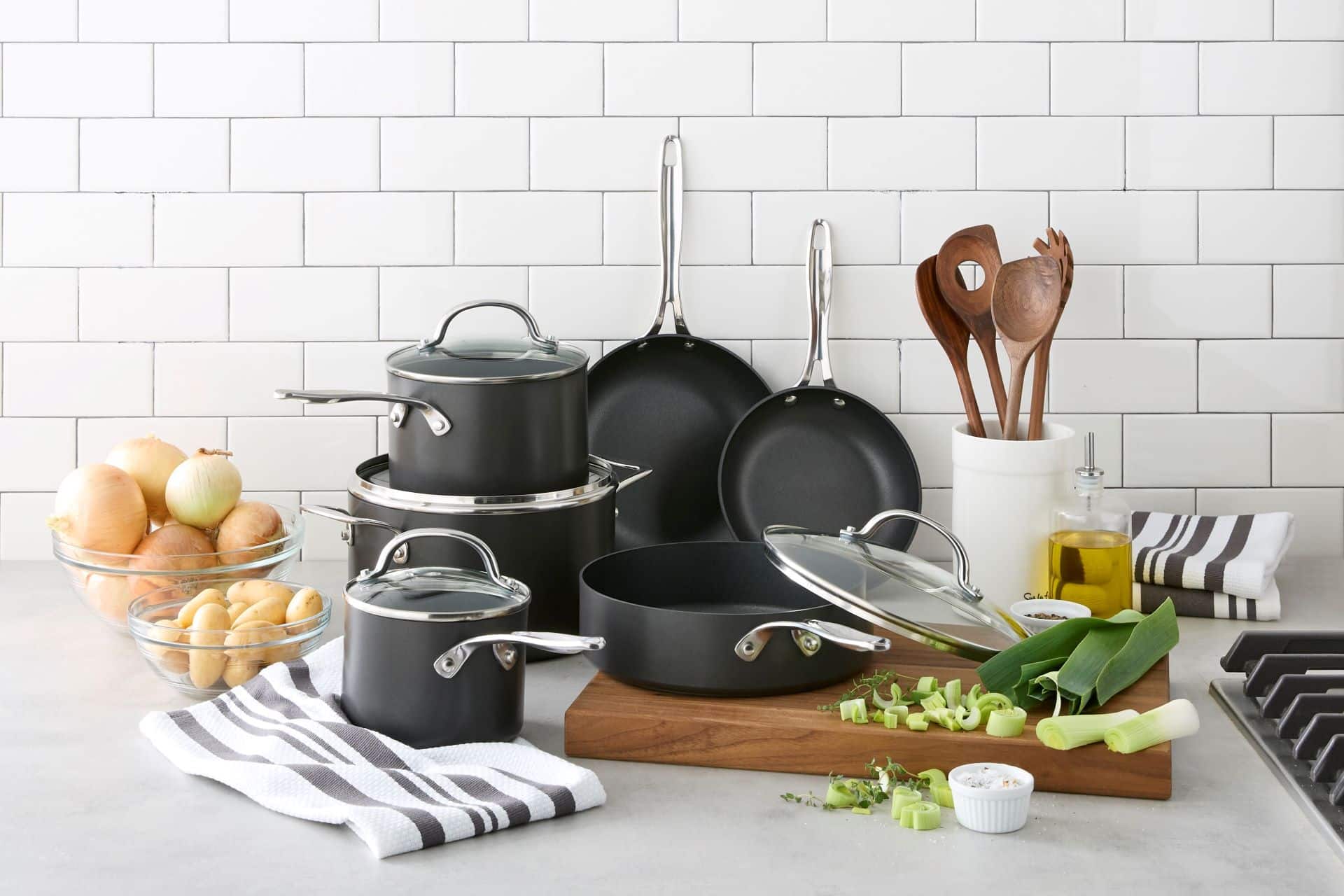Decisions, decisions.


In the diverse landscape of kitchenware, there’s a relatively new type of cookware that’s making waves in the culinary world: hard anodized nonstick.
More than just a trend, it’s steadily becoming a favorite in kitchens across the globe. Whether you’re a seasoned chef considering an upgrade or a beginner eager to get it right from the start, understanding hard anodized nonstick cookware can truly elevate your cooking experience.
In this cookware guide, learn its unique properties, benefits and best practices to master the art of hard anodized nonstick cooking!
Hungry for more? Explore Sur La Table’s new Signature Cookware collection, featuring stainless steel and nonstick, for professional-grade quality at a budget-friendly price.
Hard anodized nonstick cookware is made from aluminum that has undergone an electrochemical process, resulting in an oxide layer on the surface of the aluminum. This oxide layer is harder than steel, giving the aluminum its “hard anodized” descriptor. A nonstick coating is then applied to this hard surface, creating a unique combination of durability and ease of use.
The anodizing process involves submerging aluminum in a solution, typically a sulfuric acid bath, then passing an electric current through it. This results in a thick layer of aluminum oxide on the surface, which is extremely durable and resistant to corrosion.
Every kitchen tool brings its unique set of advantages and challenges, and hard anodized nonstick cookware is no exception. While it has gained popularity for its quality and cooking benefits, it’s essential to also understand its limitations in order to make an informed decision when shopping for your next nonstick cookware set.
Hard anodized nonstick cookware has become a mainstay in many kitchens due to its durability, excellent heat conduction, and ease of use. However, to maximize the lifespan of these kitchen wonders and maintain their pristine condition, it’s essential to handle them with care. Here are some usage and care tips to help you get the most out of your hard anodized nonstick cookware:
1. Be mindful of temperature limitations.
While many hard anodized cookware items are oven safe, always check the manufacturer’s recommendations, as maximum temperature tolerances can vary. Sur La Table’s Signature Hard Anodized Nonstick collection, for example, is oven safe up to 500°F without lid and up to 400°F with the lid—but this isn’t the standard for everything.
In general, avoid cooking on high heat to maintain the nonstick surface’s integrity. Hard anodized nonstick pans are excellent at conducting heat, so a medium setting will often do the job. Overheating can damage the nonstick surface and warp the base.
2. Use gentle cleaning agents.
Avoid using steel wool or harsh scouring pads. Instead, opt for a soft sponge and mild detergent. And, even if the manufacturer claims the cookware is dishwasher safe, it’s best to hand wash your hard anodized nonstick pans with mild dish soap and a soft sponge. This preserves the nonstick surface and prevents potential damage from harsh dishwasher detergents.
3. Pay close attention to the nonstick coating.
Should your nonstick surface begin to peel or chip, consider replacing the piece. While modern nonstick coatings are generally considered safe, you don’t want flakes of it in your food.
4. Store with care.
If stacking, consider using a soft cloth or felt pan protectors between pans to prevent scratching. You can also invest in a pot storage system, like a classic pot rack, to keep your pans on display!
Hungry for more? Explore Sur La Table’s new Signature Cookware collection, featuring stainless steel and nonstick, for professional-grade quality at a budget-friendly price.
JOIN THE CONVERSATION